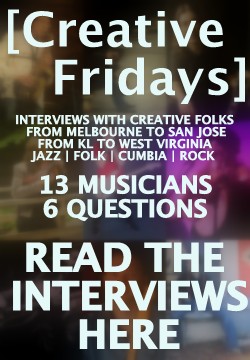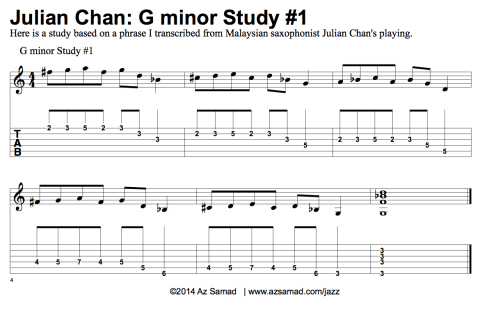What Bryan Baker taught me about transcribing jazz guitar
 Sunday, August 10, 2014 at 12:21AM
Sunday, August 10, 2014 at 12:21AM [The Background]
I attended Berklee College of Music from 2005-2007. During that time, my friends told me about a guitar player who was playing with a very unique approach. About 3 of my friends were taking private lessons with him. This person was Bryan Baker. The story was he attended Los Angeles Music Academy prior to Berklee and studied with Frank Gambale. At Berklee, he was a star guitar player and along with Nir Felder, Ricardo Vogt, Julian Lage and Jake Hertzog were the most influential guitar students I remember from my time there.
Around this time, he released his first album Aphotic and later on another version of Aphotic (live versions of the same tracks). For an extended period of time, Bryan was constantly on my iPod in rotation and on a playlist on my iTunes. I learned a lot from the lessons with him. Here's one of them.
[The Lesson]
One of the best lessons I learned from Bryan Baker was the difference between normal transcribing and transcribing the essence.
Normal transcribing is transcribing the exact notes, rhythms, phrases, licks, tone, inflections etc and to play it back exactly as close as possible to what the original artist played.
Transcribing the essence is to actually play your own lines but in the style of the artist you're transcribing. This includes playing with the same tone, gear, touch, groove, feel, inflections but not the exact notes. What you're looking for is the general note choice patterns and the rational behind the melodies NOT the exact melodies.
Being able to transcribe the essence will open up possibilities for you to create your own lines that are inspired by the artist you're transcribing.
This can go hand in hand with normal transcribing, i.e. transcribe the exact phrases but then derive the concepts behind it and play your own lines afterwards. The lines afterwards represent your work of transcribing the essence.
In my lesson with Bryan, he played a John Scofield inspired phrase with the bridge pickup of his Strat and wide intervals like what Sco would. This was his example for transcribing the essence.
This concept is a huge part of how I learn and how I digest large chunks of musical information. Hope this helps you too.
Az Samad - July 29 2014 (Edited August 11 2014)
-----
If you like this blog post, please sign-up for my mailing list to be informed of future videos & more! You'll also receive a free EP! Thank you! =)
 Permalink tagged
Permalink tagged  Jazz,
Jazz,  bryan baker,
bryan baker,  improvisation,
improvisation,  jazz guitar,
jazz guitar,  music,
music,  transcribing
transcribing 

